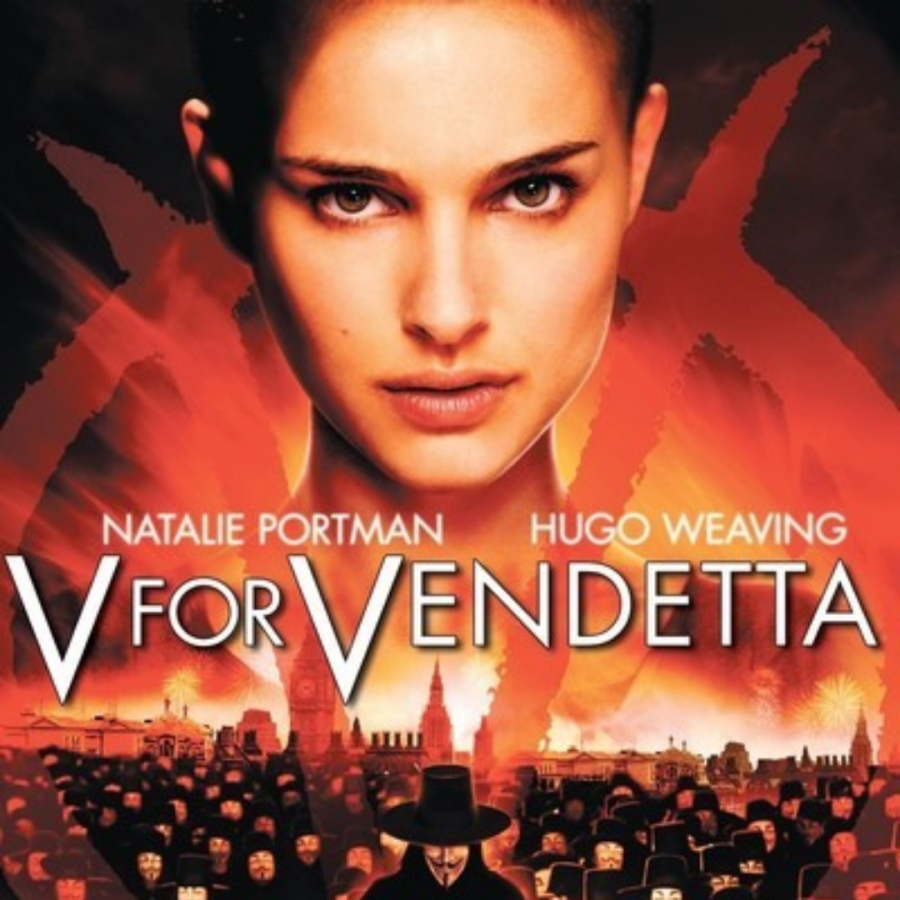GUEST: ‘V for Vendetta’ is a fitting choice for movie viewers in 2020
Our Guest film reviews are a collaboration with Billy Kaskay’s Ethics and Culture in Film elective.
The year 2020 has been unprecedented to say the least, marked by changes in almost every aspect of society and life in general. In the United States, the government has been under intense scrutiny in recent months, with claims and threats regarding corrupt leadership and election fraud. It is easy to draw a connection between this chaos and the events of the movie “V for Vendetta”, a film in which the audience sees how civil unrest can result in revolutionary ideas but also a path towards dangerous totalitarianism. Directed by James McTeigue and written by Lilly and Lana Wachowski, “V for Vendetta” was released on March 17, 2006 in the United States and had a run time of 2 hours and 13 minutes (133 minutes). This dystopian action film explores themes including freedom, authority, and the power of symbolism and encourages audiences to stand up for causes and ideas they believe in.
After giving a brief history on Guy Fawkes and the infamous Gunpowder Plot of 1605, the film opens with an introduction to Evey Hammond, a young woman living in a near-future, dystopian England with government agents lurking around every corner. Evey is stopped and harassed by these agents but is saved at the last second by a figure clad in a dark cloak and the now-iconic Guy Fawkes mask. This mysterious hero introduces himself as “V” and encourages Evey to join him on his way to a special “concert” he had organized. Evey agrees, and to her surprise, witnesses V “conduct” an explosion of the iconic Old Bailey court. After witnessing this act of resistance against their totalitarian government, Evey is tied to V and his plot to blow up the English Parliament building as an ultimate symbol of liberation. This unlikely duo is relentlessly hunted by important members of government, including High Chancellor Adam Sutler, played by John Hurt, and his cronies Peter Creedy and Eric Finch, played by Tim Pigott-Smith and Stephen Rea. Over the course of this chase, dangerous truths are revealed about the fascist English government, and support for V’s ideals continues to increase as the date of his planned bombing inches closer. The use of shadows and unique camera angles in “V for Vendetta” keep the audience from becoming too comfortable and encourages them to constantly make predictions about the plot’s dozens of unsuspected twists and turns.
One of the plotlines of “V for Vendetta” follows Evey’s growth as a person and the ways in which she develops from a submissive follower into a full-blown anarchist. This growth relates to the film’s main theme of freedom and is effectively communicated through cinematic parallels between significant moments of Evey’s life. One perfect example of a parallel can be found between the scene highlighting Evey’s escape from the metaphorical prison in her mind and V’s freedom from his physical prison cell many years prior to the events of the film. Another parallel can be drawn between Evey’s experiences, which occurred several years apart, watching both her friend and her mother be kidnapped by the government while hiding under her bed.
Strengths of “V for Vendetta” included the complexity of its plot and effective use of lighting that guided the audience’s mood in various scenes of the film. The contrast between sunlight and shadows, particularly between the scenes of Evey in prison and those highlighting the life of Valerie, a character introduced in a flashback, emphasized the difference between life before and after the rise of the fascist government. One weakness of this film was its length, which felt slightly drawn out and allowed for slower scenes that could have been abbreviated or cut out entirely.
“V for Vendetta” is a film I would highly recommend to any and all viewers, especially considering the modern political climate and movements for equality in 2020. The concluding scene of this movie left me feeling empowered but also left me concerned about the number of connections and similarities I could find within the society around me. The plot of the film, along with its solid character development, use of lighting, and engaging camera techniques, earn it a 4.5 out of 5 star rating.








Avery • Jan 24, 2022 at 2:40 pm
One of my fav movies!! So glad to see it being appreciated!!
I rewatched it in 2018, and several more times in the years to come. I saw how well a reflection it provided of many aspects of life during these times, and I’m glad someone else feels the same way!